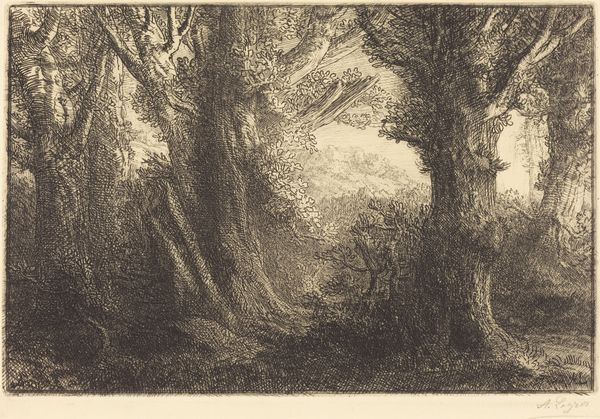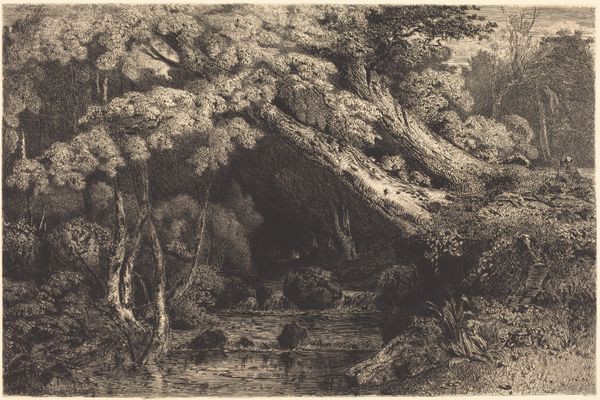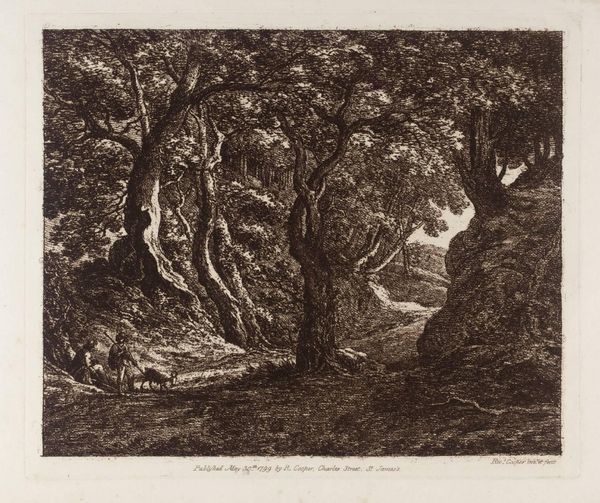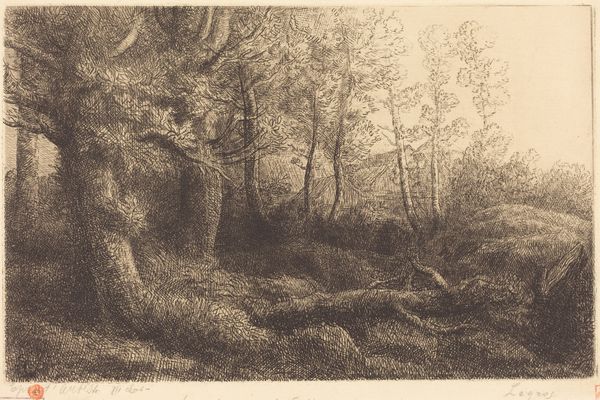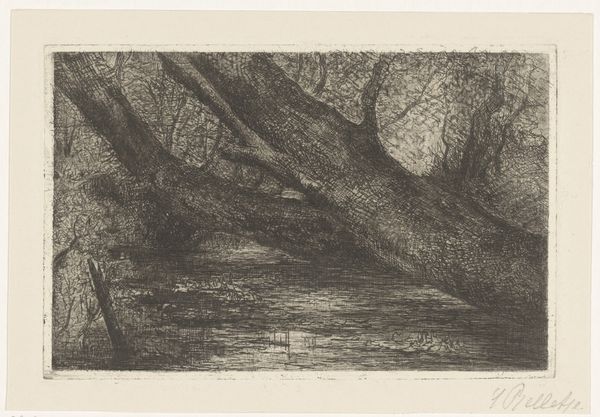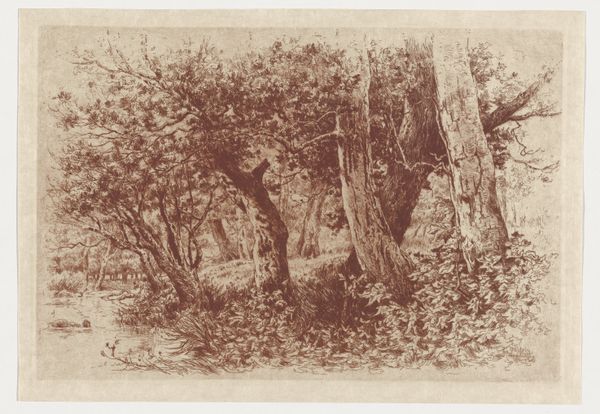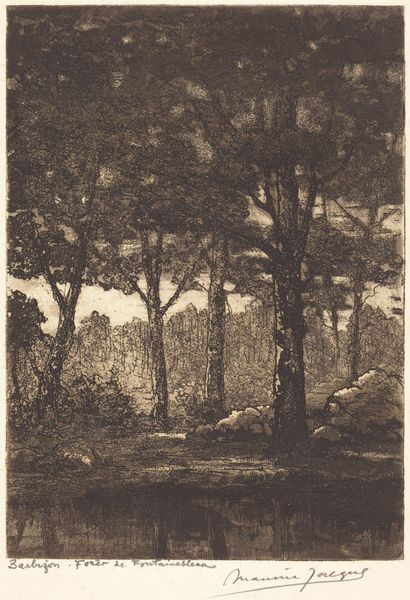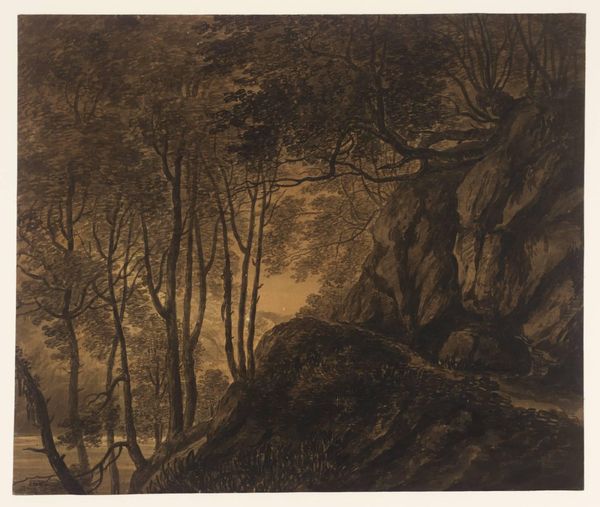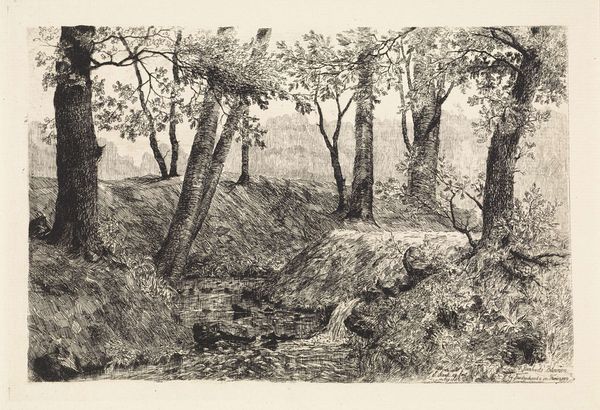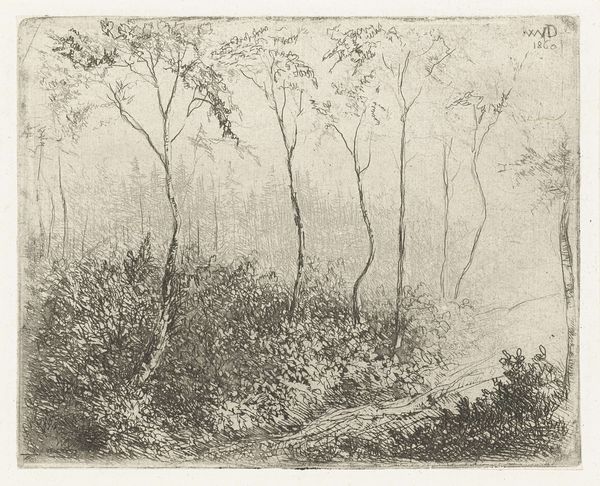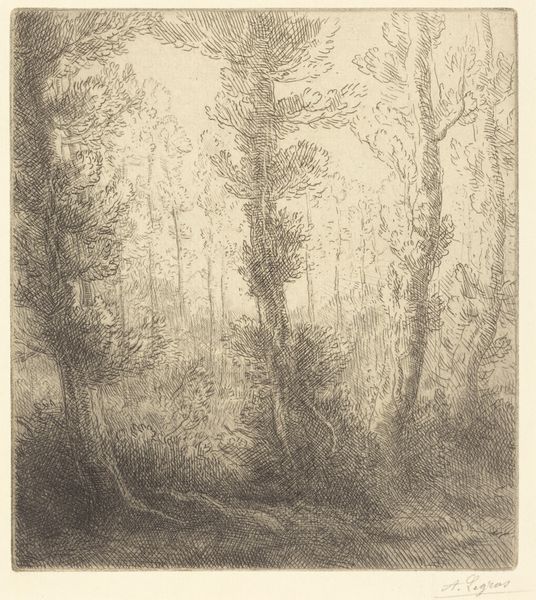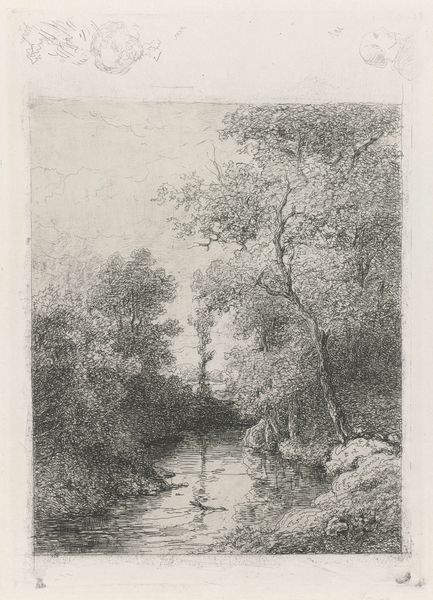
Dimensions: 154 × 229 mm (primary support); 307 × 482 mm (secondary support)
Copyright: Public Domain
Editor: Here we have Paul Huet's "Women Bathing," an etching on paper from 1867. I'm immediately struck by how the density of the lines creates a palpable sense of enclosure, almost a hidden world. What do you see in this piece? Curator: Well, I see an etching, a medium reliant on the collaborative efforts of labor. From the artisan preparing the metal plate, to the printing press workers. Consider, too, the socio-economic position of these bathing women – are they workers, or from the leisured class? The material production and consumption intertwined here reveal fascinating power dynamics of 19th-century society. How does the depiction of the landscape inform this interpretation? Editor: That's interesting. I was focusing more on the contrast between the almost wild nature and the figures, but framing it in terms of labor changes the perspective. So, the deliberate use of etching, a process involving specific materials and a chain of production, becomes integral to understanding the artwork's message? Curator: Precisely! We need to consider what the choice of etching signified in the context of mid-19th-century printmaking. Etching, unlike some quicker reproductive methods, involved craft skill and knowledge. It speaks to the conditions of artistic production at that time. Was it commercially viable, or was it an aesthetic exploration of materiality and method for Huet? Editor: So, it's less about the romanticism and more about... the means of creating that impression of romanticism. That completely reorients my thinking. Curator: Absolutely. Romanticism here could be viewed as another 'material,' constructed by the very hands involved in its making. The human labour becomes explicit! Editor: It really forces you to look beyond just the subject matter. Curator: And it demonstrates the artist’s own participation in the material world, as much as his subjective vision of it. A vision, importantly, produced through tangible actions.
Comments
No comments
Be the first to comment and join the conversation on the ultimate creative platform.
